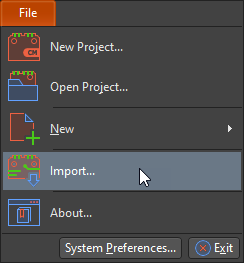Will RS485 Survive Wireless Communication Technology
Table of Contents
I am a huge fan of the Nokia 3310 that has recently made a comeback in the mobile phone industry. If you’ve never used one in your life then you’re missing out one of the most reliable and durable mobile phone in recent history. Unlike the early 2000’s, it’s not common to find mobile phones that can double as a nut-cracker and survive the worst of falls.
The same form of robustness and reliability in the world of electrical design is RS485 communication. Like the Nokia, I will be loyal to it forever. However, as wireless communication technology becomes more ubiquitous with each passing day, I wonder whether my tried and true protocol will become an artifact of old times.
RS-485 and its Applications
While I might love my Nokia, I once dated a girl who never responded to any texts or phone. I didn’t take it personally until she refused to talk to me at all. Bottom line, without communication both your relationship and your electronics won’t function properly. Electronic devices are often placed several hundred meters from each other and in a less than an ideal electrical environment. This demands communication methods that can reliably address the concern of electrical interference, distance, and speed.
Interference: RS485 is a standard that defines the electrical characteristics of a serial communication protocol that transmits data in a half-duplex differential mode. As a result of the differential signaling and twisted pair cable, data transmitted over RS485 can go as far as 1200 meters and has a high tolerance to signal interference.
Distance: Another communication my Nokia couldn’t solve was when I would call my girlfriend, who was in North America, while I was away traveling in Europe. The nine hour time difference meant that when I was waking up to start my day, she was getting ready for bed and it became hard to relate to one another. If only we could be expert communicators like RS485, which addresses the issue of ground shift. Devices that operate in different locations have different ground points and are not the same relative voltage. With RS485, the data integrity remains intact even if two devices are referenced to grounds of different potentials. This is because RS485 uses differential signals, where logic 1 is reflected by a logic 0 in a pair of data lines, as opposed to single ended signals that reference the data signal to ground.
Speed: At its maximum length, the speed of transmission is specified at 100 kbps, which is more than enough for most applications. Alternatively, standards like RS232 can only travel up to 15 meters, due to its single ended signaling. A better contender is the CAN bus, which can travel up to 1,000 meters at 50kbps, but is much harder to implement at the firmware level, compared to RS485.
RS485 defines only the electrical standards, leaving the interfacing protocol open to popular standards like Modbus, Profibus or proprietary protocols introduced by respective manufacturers. This flexibility has made RS485 popular in applications like automation controls, data acquiring solutions and building automation systems.
The emergence of wireless technology threatens wired communication
In recent years, wireless communication technology has become common in embedded systems. Wireless technologies like Bluetooth, Wifi, and Zigbee currently have a huge presence in certain industries and have replaced wired solutions. This trend is obvious in commercial automation like smart homes, security systems, and IoT.
RS485’s contender
Wireless communication solves a lot of the issues that have been troubling wired installations. The cost of raw materials is increasing, which makes copper wire an expensive solution that many end users are avoiding. It also completely removes having to do tedious pre-installation work. This completely does away with all the drilling, hacking and laying down cable that we all have come to loath.
In outdoor installations, lightning strikes are one of the main culprits for wired protocol breakdowns. This results in hefty repair costs and a major inconvenience. Costly lighting surge protectors are often installed to prolonged the lifetime of the devices in locations prone to lightning strikes. Alternatively, wireless repeaters have a considerably longer lifetime since they do not have data cables that can be directly exposed to lightning strikes.
With wireless technology offering a more economical approach to inter-device communication, will it spell the end of the RS485 standard?
Why RS485 will survive
Like my long distance relationship, serial communication has been on the decline. This is especially the case in consumer electronics. It has been almost a decade since computers stopped featuring RS232 ports on the motherboard. Companies have turned to wireless technologies to cut down on material and labor costs. However, RS485 is still a popular choice in certain industries. Particularly in industrial processes and building automation.
Too many repeaters may defeat the purpose of simplicity.
While wireless technologies offer ease of installation, there is still a limitation in terms of signal strength and stability in applications where devices are in locations separated by concrete architectures. Bluetooth signals are limited to a specific obstacle-free environment. Zigbee may need multiple repeaters, and WiFi drops in signal strength when devices are spread to various corners of a building.
It can’t be denied that more companies are considering replacing RS485 with the wireless alternative, only to have the potential cost saving measure weighed down by technical complications. Multiple wireless repeaters may introduce multiple points of failures, and RS485’s native noise tolerance characteristics, without complicated algorithms, provide an edge over other communication methods.
Of course, RS485 may join its obsolete brethren RS422, if emerging technologies like Low Power Wide Area Network (LPWAN) evolve so that they can support high data transmission rates on top their low power, wide area line of sight coverage. Until then, RS485 may still be the best option for applications that require high-data rates, long distance communication, and high tolerances.
Important tips working with RS485
To get the best out of RS485, especially its noise tolerance in long distance communication, termination resistors need to be installed if transmission speed exceeds 115 kbps. You should also make sure that only twisted pair cables are used in installations.
Don’t forget, the data connections (D+, D-) of the RS485 need to be routed in parallel and with matching lengths to prevent unnecessary EMI issues if the data is transmitted at high speeds. You may also want to consider placing transient protection components to protect the RS485 circuitry from external surges.
When you need to access an easy-to-use PCB layout tool that includes everything needed to build high-quality manufacturable circuit boards, look no further than CircuitMaker. After you’ve determined your required PCB copper thickness and you’re planning for manufacturing, you can instantly generate the output files needed by PCB fabricators. All CircuitMaker users also have access to a personal workspace on the Altium 365 platform. You can upload and store your design data in the cloud, and you can easily view your projects via your web browser in a secure platform.
Start using CircuitMaker today and stay tuned for the new CircuitMaker Pro from Altium.

















